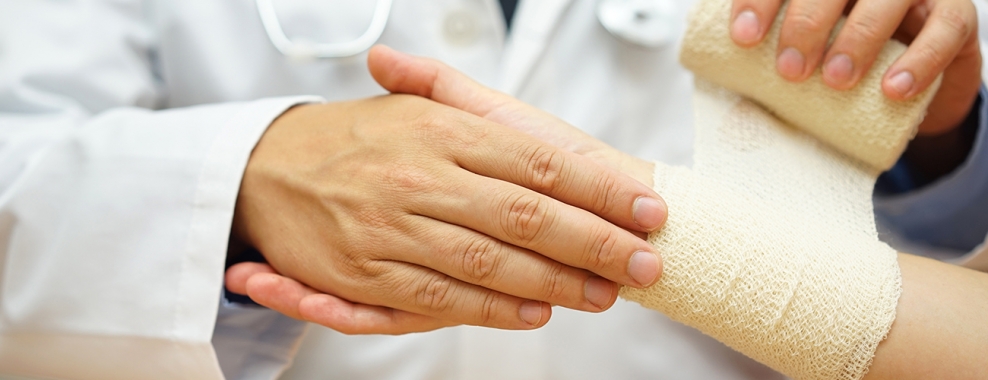Human Bites

The seriousness of bite injuries are often underestimated at the time of the incident. Medical treatment is often delayed until such time as the wound becomes a serious concern. The risk of infection is extremely high due to the number of infectious agents in the human mouth when combined with the broken skin of another individual. If there is any question about the skin being broken from a human bite, it is best to seek medical care immediately. The goal of early treatment is to reduce the chance of infection and reduce the potential for scarring. All bites, intentional or accidental, should be evaluated immediately and treated as though potentially serious.
STEPS TO EFFECTIVELY TREAT A HUMAN BITE:
- Evaluate the bite area. Bites that do not break the skin do not require first aid care. Bites to the hand, close to or on the face or bites that have become infected should be treated with antibiotics. Severe bites should be treated by a medical professional.
- Take care of minor human bites. A minor human bite is one where the skin has not been punctured or if the skin has been broken, bleeding and tissue damage are not severe.
- Wash the bitten area thoroughly no matter how small the wound is. Use soap and running water. Copious washing will decrease the chance of infection. Wounds that are large, deep or dirty are best cleaned by a medical professional.
- Allow the wound to bleed, to help cleanse the area of pathogens. If the wound is bleeding heavily, a clean dressing or sterile pad should be used to apply pressure until you can get medical attention.
- After cleaning, dress the area with gauze or a sterile non-stick dressing. This is a preventative measure to keep the area clean and infection-free.
- Get immunized! If the bite has broken the skin you will need to be immunized. Complete the divisional immunization forms for reimbursement. Forms can be found on the divisional safety website.
- Medical attention should be sought where a bite has broken the skin. Ensure the bite victim has current vaccinations. The two diseases of greatest concern are Hepatitis B and Tetanus. Though they are not a risk with every bite, hepatitis and tetanus infections are possible. Preventative measures should be taken to protect the victim from further unnecessary complications. If you have not had a tetanus booster within the last 5 years you will need to be immunized.
- Physicians may consider testing for HIV. Transmission of HIV during a bite incident is not likely but it is possible. If the biter is unknown, testing for HIV can provide peace of mind for the person who was bitten.
- Bites that occur in higher risk areas such as the face, hand or foot, bite wounds that are large or deep, involve tendon, joint spaces, or where deep puncture wounds are present, are believed to be at higher risk for infection and therefore may require antibiotic treatment.
- Some damage caused by bites may need to be repaired with plastic surgery. Extremely severe bites that result in the loss of tissue may need surgical repair.
- It is generally recommended that patients who have been treated for bite wounds return within 48 to 72 hours for reassessment. The development of any signs or symptoms of infection indicate a need for the patient to be treated with antibiotics. This may become evident several days after a bite injury has been sustained


Please provide your question and email address in the fields below.
Your question has been successfully submitted.
CloseThank you.